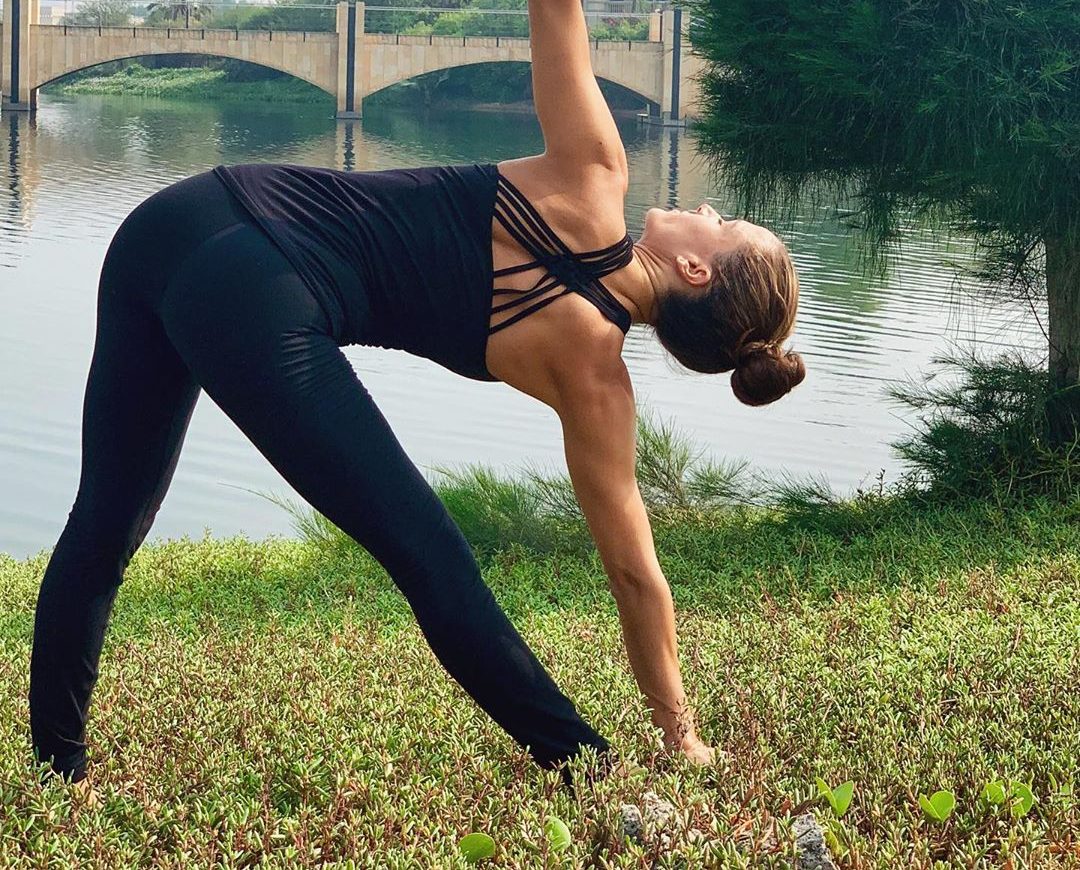Yoga Twists
If you're new to yoga, you're probably afraid that you might lack the flexibility to succeed in certain postures. Rest assured, many yoga positions are accessible to everyone and there is no need to twist to achieve them... However, when we talk about twists in yoga, I can feel your heart racing: "What am I going to do with this exercise? ». Again, it's not about putting your legs behind your head or bending in half to do the twists. So what is it? How do you do them? When should you avoid them? I explain everything about twisting in this article!
What are the twists in yoga?
Twists are yoga postures in which the spine is rotated around its axis. This exercise stimulates the internal organs and muscles of the back. In English, it is called "twist".
These exercises are generally done in a sitting posture like Ardha Matsyendrasana or Ardha Marichyasana or in a lying posture like Jathara Parivartanasana. Nevertheless, one can also perform standing twists such as the upside down triangle posture or head upside down as in Sirsasana.
All these names mean nothing to you? Don't panic. It's time to decipher some of the twisting postures in yoga to help you find your way around.
Twisting postures in yoga
Ardha Matsyendrasana or the sitting half-twist posture
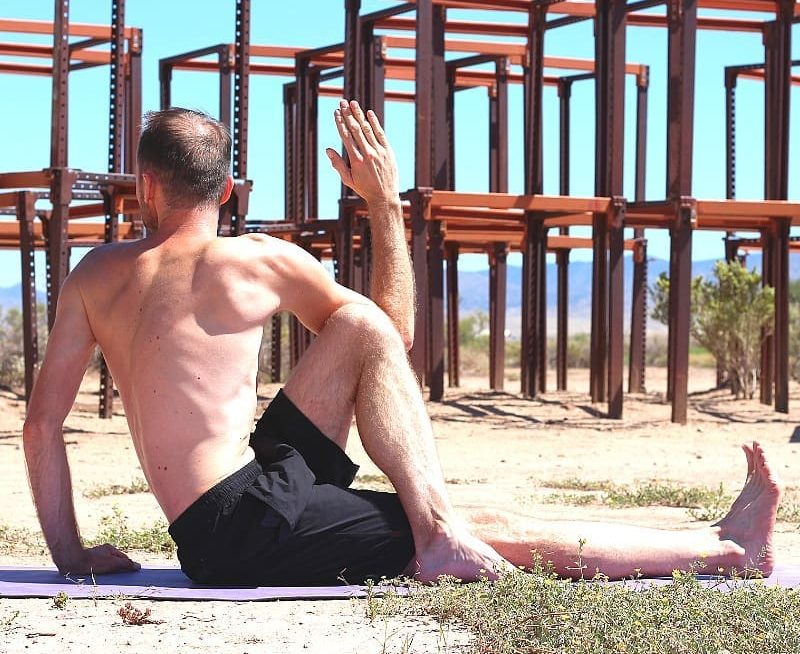
Begin in a seated posture, with your legs extended in front of you on your mat. Pull your buttocks back slightly to release the pins outward. Rest your right hand on the floor behind your back to help you stabilize. Keep your back straight. Next, place your right foot flat in front of you, knee bent, with your right malleolus (ankle bone) against your left knee. Inhale, the left arm goes up to the sky and when you exhale, bend your elbow and place it on the outside of your right knee. Gently turn the abdomen to the right side. Then the shoulders follow the movement, as does the gaze. You can also extend your left arm and bring your left hand to the ground, outside your right ankle. Elbow bent or relaxed, as you inhale, grow and as you exhale, turn a little more to the right. Then do the same posture on the left side.
Ardha Marichyasana or the posture of the wise Marichi
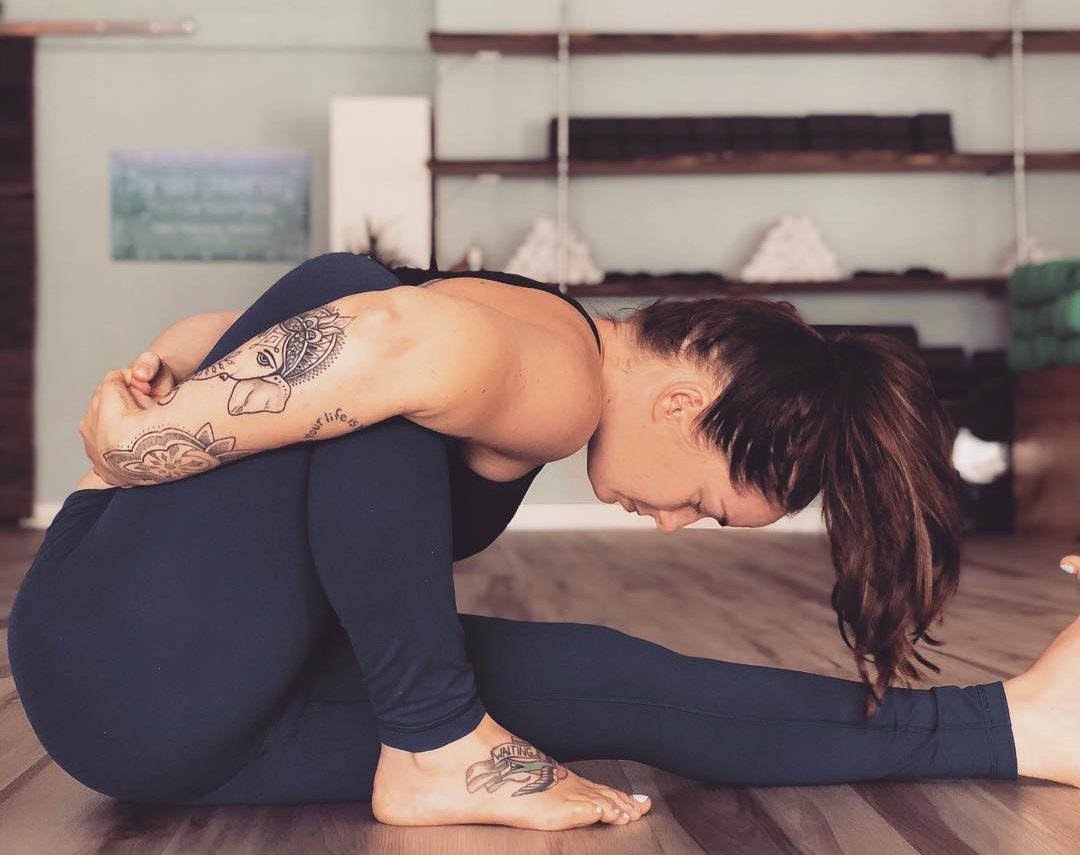
The posture begins in the same way as the previous posture. Begin in a sitting position with both legs extended in front of you on the mat with your back straight. Remember to release the buttock bones outward with your hands. Place your left foot as close as possible to your left thigh, flat on the floor. From here, breathe in and extend your left arm toward the sky. Pass it between your two legs. Then, bring your left leg together by turning your arm and trying to place your hand towards your back. Next, pass your right arm towards the back of your back and try to touch both hands on the back of your back. A strap can also help you do this if you lack a little flexibility. The left buttock can come off to accentuate the posture. Finally, move your chest to the right and straighten up. Breathe deeply here. Don't forget to do the posture on the other side.
Jathara Parivartanasana or the twisting belly posture
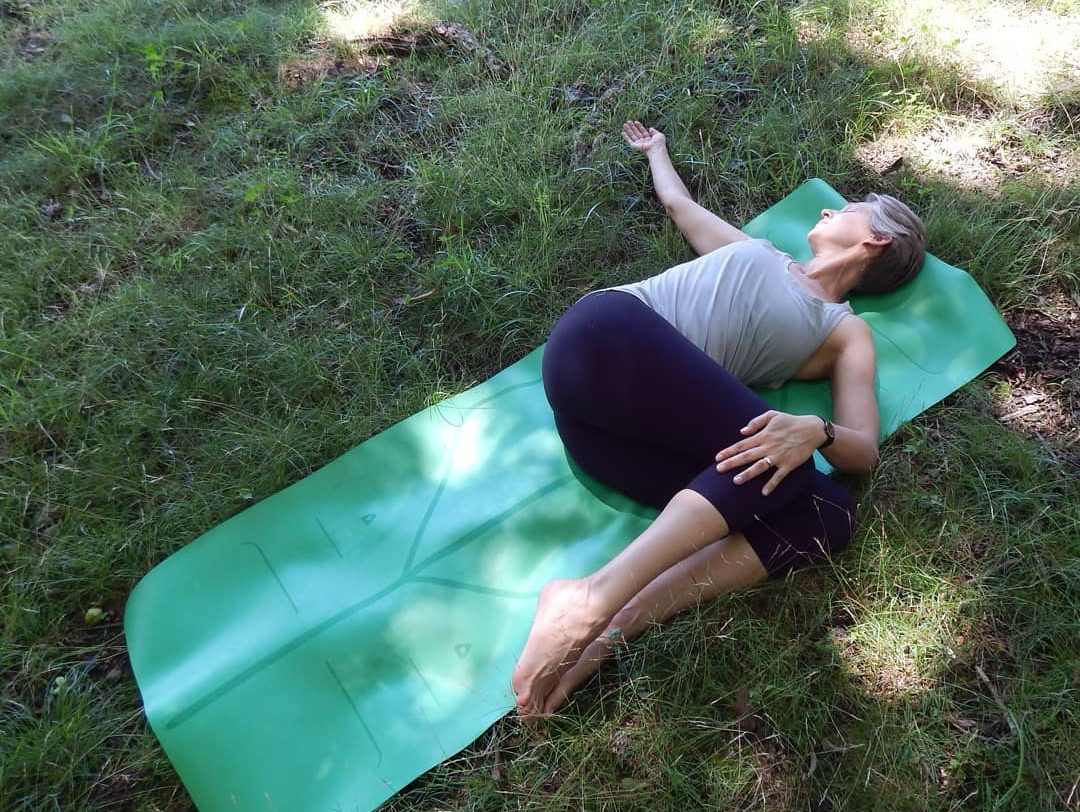
Lie down on the floor on your back in Savasana. From here, bend both your knees and place your feet flat on the floor near the buttocks. Then, bring your knees against your bust using your arms. Extend your arms on each side of the bust in a cross on the floor. Then, using your left arm, gently slide your knees to the left. Place your left hand on your left thigh or knee. Look to the right, towards your right arm. Inhale and exhale here. Then perform the same position on the other side.

Twists in yoga: many benefits for the back
Yoga twists are ideal postures for working the whole back. Indeed, they mobilize the entire spine but also the rib cage and the neck. Often, during the postures, we lengthen the spine on the inspirations and we turn a little more on the expirations. Thus, lengthening the spine and breathing allows to create space between each vertebra. In addition, the twists in yoga allow to relax the muscles of the back, but also of the belly like the obliques and the abdominal muscles. They help to lengthen and soften these muscles. Thus, while working on the spine, this helps to contribute to the mobility and flexibility of your back. These exercises can therefore allow you to gradually reduce your back pain.
In addition, strengthening your spine will allow you to adopt a better posture on a daily basis and prevent accidents such as lumbago. If, like the vast majority of people today, you have or have had back problems, twisting will be particularly interesting to work on.
When we talk about twists in yoga, we often talk about their "detox" effect on the body. Indeed, twisting stimulates the internal organs and allows the digestive system to function at its best. In addition, the help of breathing and the calmness instilled by a yoga session will also allow you to untie the tensions inside your abdomen. The twists would therefore have the capacity to accelerate intestinal transit, increase digestive secretions and blood flow to the intestines. Their interest for the proper functioning of the liver is often emphasized as well.
The benefits of twisting on the mind
On the other hand, if the twists in yoga facilitate intestinal digestion, he says that they also have a positive effect on the digestion of emotional states. Indeed, they would make it easier to free oneself from the tensions that sometimes remain accumulated in the hollow of the body or in the stomach. Thus, sessions based on twisting often give practitioners a liberating effect: you will suddenly feel much lighter!
Twisting is also an excellent exercise for your mind. Indeed, in torsion, you feel compressed, but the help of breathing makes the exercise more pleasant. Thus, it allows us to learn how much the breath can be useful to us in daily life when facing a difficult situation. When we feel trapped or stuck in a situation, our breathing can always help us to create space and see more clearly.
In addition, when we twist, we compress certain parts of the body, which has the effect of freeing space within us. We let go of what we don't need, what we don't need anymore and we make room for the good things in life.
Finally, a posture acts on the spine, also acts on the chakras. Thus, twisting movements also allow energy (prana) to flow more freely along the spine. This will affect your energy level.
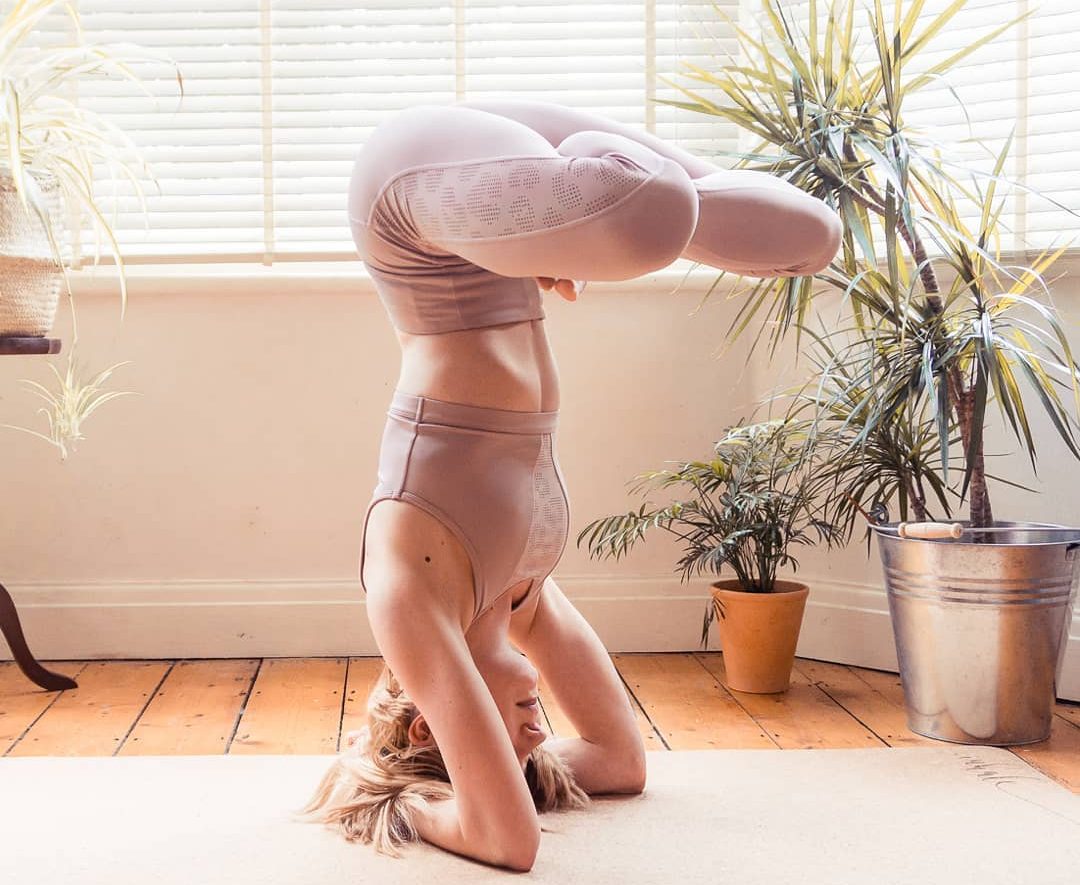
Twists in yoga: when to practice them?
Twists can be practiced throughout the year and can be included in all yoga sessions. Nevertheless, they can be used especially during certain periods: after the holidays or at the change of season for example.
If you are new to yoga, there are twisting postures that are right for you! Indeed, some will be simpler than others to achieve. For example, before relaxation, you will certainly appreciate the twisting belly posture (lying down position described above).
When not to practice twisting?
During digestion: As you already know, it is not advisable to practice yoga right after a meal, with a full stomach. Indeed, during this period, your body enters the first phase of the digestive process and intense exercise can have a negative impact on digestion. Instead, the digestive organs need a resting body to function properly. On the other hand, intense movement can slow or disrupt digestion. Also, among the postures to avoid absolutely right after a meal, it is twisting that comes first. Indeed, they act particularly on the internal organs, which could give you a lot of discomfort and digestive disturbances (nausea for example).
Pregnant women? Yes and no! It is often said that twisting is not recommended for pregnant women (especially at the end of their pregnancy) because it can put pressure on the uterus and give less room to the foetus. However, a twist is not capable of triggering a miscarriage or childbirth. No woman has been able to go into labor by performing a twist (even if she tried!). So, if you are pregnant, it will be more important to listen to you to find out whether or not you can perform these postures. This is the case for all prenatal yoga postures after all. If you feel any discomfort during the twists, avoid them. On the other hand, you can certainly practice some gentle twists while pregnant but with less intensity. Also, after giving birth, you will have to wait a few months before resuming twisting as before.
Before Sleeping : Twisting postures tend to energize and stimulate the body and mind. Therefore, if you practice in the evening, it is best not to practice a lot of twisting, especially standing twists such as the inverted triangle. However, you may want to do some twisting postures on the floor to relax.
Back and digestive problems: It may be uncomfortable to practice twisting in times of intestinal disorders or menstruation. On the other hand, if you have a heavy digestive or back pathology, you should always ask your doctor's opinion to find out if the practice of twisting is not contraindicated. In case of small temporary back problems (tension after a long day for example), twisting can however do you a lot of good.
For a good twist, always start on the right side.
If you have been practicing yoga for some time, you may have noticed that your yoga teacher always starts the twisting postures from the right side. That is to say, when doing the twists, you will first turn to the right. Indeed, this allows you to act physiologically, following the direction of the intestinal peristalsis. Thus, the ascending colon, liver and right kidney will be stimulated at the beginning of the posture, while the descending colon, spleen, pancreas and left kidney will be stimulated at the end.
You now know more about twisting postures in yoga. I hope that this article has helped you to learn more about these exercises. Feel free to share your favorite twisting postures as comments.


